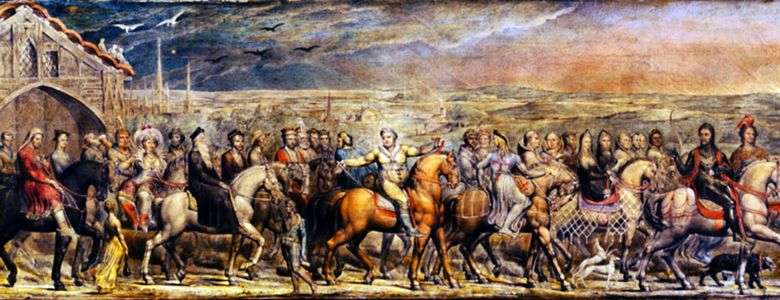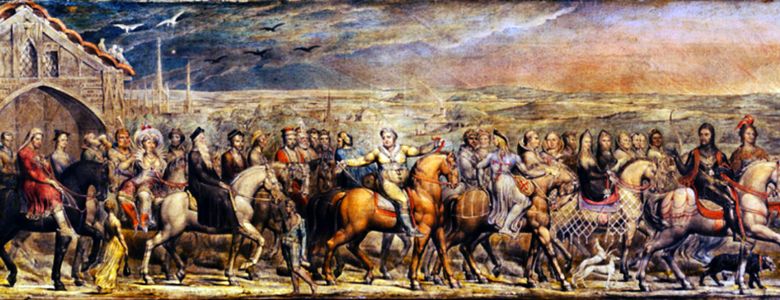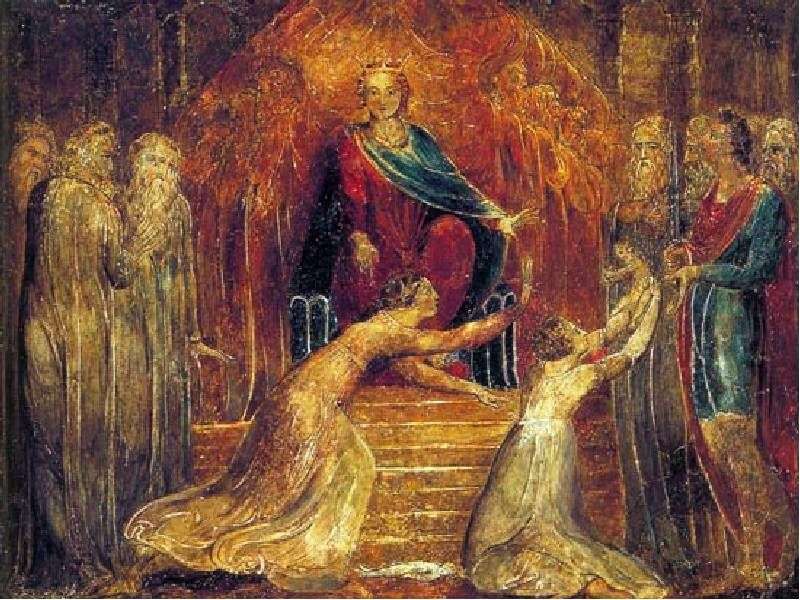
According to Blake’s idea, “Canterbury pilgrims” were to be the central exhibit of his exhibition, arranged in 1809 in his brother’s house. The format of this painting is unusual for Blake. It is quite large; In addition, it uses an elongated composition.
Finally, the plot selected by the master can not but cause surprise. Nevertheless, an explanation for all these oddities can be found. Firstly, Blake could hope that the picture would be enjoyed by those who did not organically perceive his other works, finding them just “the nonsense of a crazy visionary.” Secondly, he very much appreciated Jeffrey Chaucer and considered him – along with Milton and Shakespeare – one of the pillars of English literature. Indeed, Chaucer’s Canterbury Tales, written at the end of the fourteenth century, is a masterpiece of medieval literature.
The book includes more than two dozen short stories, told on behalf of the most diverse characters – knights, craftsmen, merchants, abbess of a convent, student, lawyer and so on. These stories represent a kind of “gallery of genres” – from the knightly novel to the moral treatise. All the characters are united by a common “occupation” – they travel to the relics of St. Thomas Becket in Canterbury, and stories tell each other to pass the time. Blake saw in this pilgrimage the allegory of the earthly path, and considered the pilgrims as “types embodying the features of the earthly and eternal.” To each of them he gave the characteristics, which we will use when analyzing the picture.
 Peregrinos de Canterbury – William Blake
Peregrinos de Canterbury – William Blake Pèlerins de Canterbury – William Blake
Pèlerins de Canterbury – William Blake Dante and Beatrice by William Blake
Dante and Beatrice by William Blake Beatrice turns to Dante from the chariot by William Blake
Beatrice turns to Dante from the chariot by William Blake Adam and Eve find the body of Abel by William Blake
Adam and Eve find the body of Abel by William Blake King Solomon’s Court by William Blake
King Solomon’s Court by William Blake The Great Architect (The Creation) by William Blake
The Great Architect (The Creation) by William Blake Elohim creates Adam by William Blake
Elohim creates Adam by William Blake